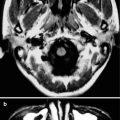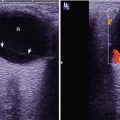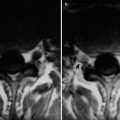(1)
Radiology Department Beijing You’an Hospital, Capital Medical University, Beijing, People’s Republic of China
Abstract
The patients or suspected cases of HIV/AIDS should receive the following laboratory tests:
Keywords
Routine ExaminationAutopsyImmunohistochemistryMolecular Biological Test7.1 Routine Examination
The patients or suspected cases of HIV/AIDS should receive the following laboratory tests:
1.
HIV antibody test
HIV antibody can be tested with ELISA, Western hybridization, or rapid method with golden standard. The sensitivity of the 3 tests is all above 99 %;
2.
Virus isolation and culture
The peripheral lymphocytes are commonly used for virus culture, with a positive rate of above 95 %.
3.
Anti-HIV antibody positive proved by confirmative test
Enzyme linked immunosorbent assay (ELISA) and Western blotting are commonly used for antibody detection. ELISA has favorable sensitivity and specificity, appropriate for early screening. Twice tests positive can be defined as the positive. Western blotting has a higher specificity in determining virus protein, appropriate for confirmative test.
4.
Serum P24 antigen positive.
ELISA is commonly used to detect virus antigen including P24 antigen.
5.
Characteristic drop of TH cells.
The TH cell percentage in healthy persons is 40–70 %, with an absolute count of 500–1,600/mm3. For diagnosis of HIV/AIDS, the ratio of TH/TS is less than 1.0, being 1.75–2.7 in healthy persons.
6.
Delayed hypersensitive skin test.
Skin tests against DNCB (dinitrochlorobenzene), trichothecin and candidin are negative.
7.
T cell conversion test
T cell conversion test shows a decreased result, with e-rosette being less than 65.
8.
Increased β2 microglobulin
After HIV infection, monocytes are activated or destroyed to increase the serum β2 protein level (>3–5 mg/l). Radio immunoassay or enzyme immunoassay are commonly used to detect it.
9.
Pathogen examination
Tests for opportunistic pathogens include carinii, candida albicans, cryptococcus neoformans and toxoplasma.
7.2 Autopsy
By autopsy, the various conditions of the dead can be comprehensively understood, including the lesion location, the range, the property and the type. Blood tests of autopsy can be applied for detection of various pathogens. It is possible to find some rare or unexpected diseases by blood tests of autopsy. Autopsy findings of patients with AIDS enrich and extend our knowledge to AIDS related diseases. The precautions in autopsy include: Exposure to the blood, body fluid, secretions and organ tissues of the death case should be in great precausion. There should be specialized room or specialized operating table for autopsy of AIDS cases. All items on the operating table should be prominently marked. The autopsy room should be equipped with facilities of bathing, sanitary equipment, air-conditioner and heating installation. In the autopsy room, there should be specialized clothing, devices and equipments, with efficient disinfectant and fixing fluid. The autopsy room should also be equipped with specialized sewage system. And the above mentioned devices, equipments and installations should be managed by a specific personnel. Safety should be guaranteed for personnels performing autopsy and during autopsy, following precautions should be paid focused attention:
1.
Take initiatives to understand the related clinical data and physicians requirements to have a definite aim in autopsy. For suspected cases of AIDS, the preventive measures should be reinforced for favorable disinfection and quarantine.
2.
Autopsy generally follows routine operational procedures, including the brain. If necessary, blood can be collected after thoracotomy for use (e.g. pathogen as well as antigen and antibody tests). Specimens that require specialized processing should be prepared in advance.
3.
AIDS patients often have KS, manifested as bleeding plaques or nodules in skin, mucosa, lymph node or organs. Close attention should be paid during examinations on the body surface and organs for appropriate sampling.
4.
AIDS patients commonly have obvious lesions in lungs, gastrointestinal tract and brain. Sometimes multiple lesions mix together, which needs special attention. The examiner in chief should well know the disease spectrum of AIDS. The suspected lesions should be more sampled to avoid missing diagnosis of important diseases.
5.
Lymph node may have HIV-induced lesions, with possible occurrence of infections and neoplasms. The autopsy should be performed for the whole body and specimens collected from multiple lesions (including superficial lymph nodes and thoracic and intraperitoneal lymph nodes). The shrunk lymph nodes also needs examining.
6.
AIDS patients often have histories of intravenous drug abuse, homosexuality and sexually transmitted diseases. The upper arm, perineum and anus should be performed examinations during autopsy for clues of diagnosis.
7.3 Pathological Examinations and Immunohistochemistry
7.3.1 Pathological Examinations
7.3.1.1 Biopsy
Surgical removal of the pathological lesions for biopsy can be used for patients with lesions in skin, mucous membranes and superficial lymph nodes. Endoscopic forceps for biopsy can be used for patients with lesions in the digestive tract and respiratory tract. If necessary, imaging guided puncture or open biopsy can be applied to harvest the diseased lesions. Due to the compromised immunity of the patients, the trauma should be possibly avoided and biopsy is a favorable choice. In addition to the routine histological examinations, histochemistry, immunohistochemistry, electron microscopy, PCR and in situ hybridization can also be considered for use. The application of cell culture, animal inoculation and other means of detection can also be applied to determine the pathogens.
Biopsy and specimens collection
1.
Try to avoid scratched, lacerated and needle-stuck skin by sharp instruments. Be cautious of preventing spillage of blood and body fluid from patients. The fixed specimens may still have active HIV in them. Therefore, the contacts to skin and mucous membrane as well as specimens collection should be cautiously performed.
2.




The focal, plaque and nodular lesions should be completely removed. For diffusive lesions, sampling from different sites should be performed and the lesion for sampling should be from lesions with different manifestations. For lesions with uncertain definitions, the specimens should be possibly collected more to reduce the chances of another exposure.
Stay updated, free articles. Join our Telegram channel

Full access? Get Clinical Tree







